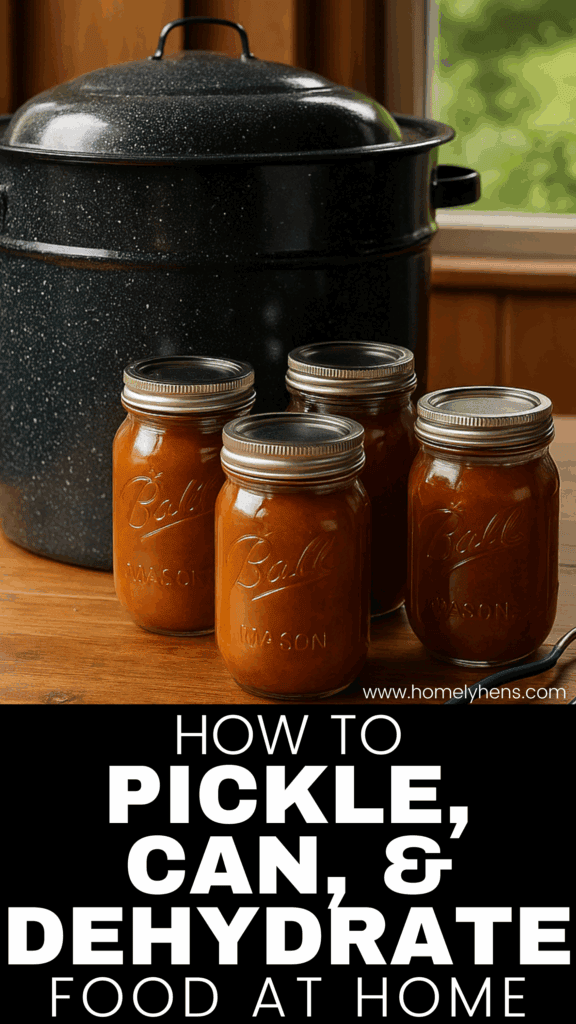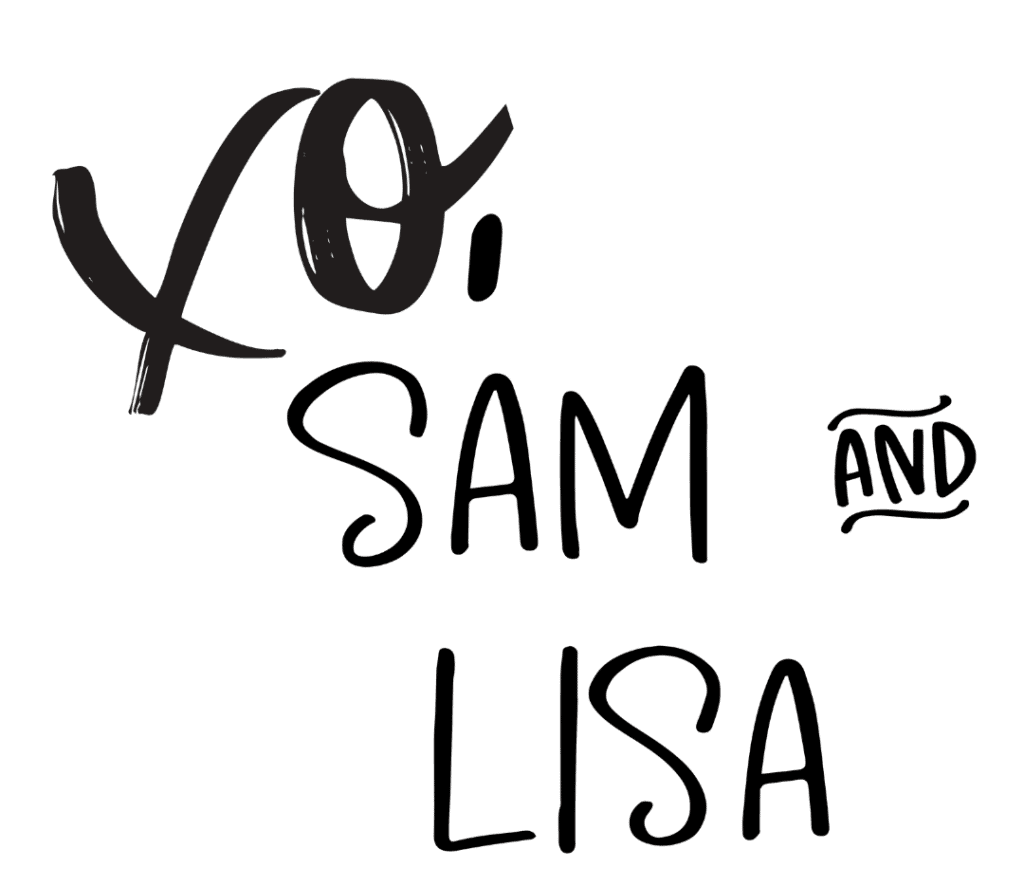Food Preservation Methods: How to Store, Can, Pickle, and Dehydrate Food at Home
Preserve food at home with methods like canning, dehydrating, and more. It is a rewarding way to keep your homegrown fruits and vegetables fresh all year.
Whether you’re water bath canning jams and pickles or dehydrating herbs and fruit, using the right tools and techniques ensures safety and delicious results.
This guide covers essential canning equipment, monthly planning tips, safe storage methods, and troubleshooting common challenges.
Ready to start preserving your harvest? Scroll down to discover recipes, expert advice, and all you need for successful food preservation through canning.

This post contains affiliate links. This will not cost you anything but will help us to offset the cost of running the blog. We only share products we use and would recommend to a friend. Thank you for your support! Click ‘HERE’ for more info.
Food Preservation Tools, Storage, and Troubleshooting
Essential Tools for Home Canning and Preserving
Preserving food at home is simpler and safer when you have the right tools on hand. Whether you’re canning, fermenting, pickling, dehydrating, or freezing, quality equipment makes a big difference.
To help you plan your preserving schedule throughout the year, check out our Monthly Canning Guide for Zone 5 Gardeners and Canners. This guide walks you through the best times to preserve your harvest based on the local growing season, so you never miss peak freshness.
- Freezing: Freezing is one of the easiest ways to preserve food quickly. Use freezer-safe containers, silicone trays, or zip-top freezer bags to portion and store items like berries, herbs, broth, soups, and even pie fillings. A vacuum sealer can extend freezer life and reduce ice crystals.
- Canning: Use a water bath canner for high-acid foods like jams, jellies, and pickles, and a pressure canner for low-acid foods like vegetables, meats, and soups. Must-haves include canning jars, new lids, rings, a jar lifter, and a funnel.
- Pickling & Fermenting: For quick pickles, basic jars and a water bath canner work well, but remember you can also store them in the fridge in the short term if you don’t have a canner. For fermentation, you’ll need wide-mouth jars, glass weights, and fermentation lids or airlocks to manage gas release and prevent mold.
- Dehydrating: A quality dehydrator with temperature control ensures even drying for fruits, vegetables, and herbs. For smaller batches, oven-safe racks or mesh trays work in a low-temp oven. Use airtight containers or vacuum-sealed bags for storage.
How to Store Home-Canned and Preserved Foods
Once you’re done preserving, you need to store your foods safely and properly so they stay sealed and ready to eat, even months later. A common mistake with beginner canners is storing jars with the rings on. We explore why this is never a good idea in the post below.
- Store Jars with the Rings OFF – Prevent spoilage and extend shelf life.
- DIY Shelf to Store Your Canned Goods – Build a strong, space-saving jar shelf.
Troubleshooting Common Food Preservation Issues
It happens to all of us; we’ve spent time picking, washing, prepping, and canning, and then the jar doesn’t seal or the jelly doesn’t set. It’s frustrating, but there are ways to fix some common canning mishaps.
If you get a jar that doesn’t seal, you don’t need to toss it. Put it in the refrigerator and use that one within a week or two. If you have jelly that didn’t set, follow these guidelines and you’ll make a jelly as good as new:
- How to Rebatch Jelly that Didn’t Set – Fix runny jelly with this simple method.
Water Bath Canning
Water bath canning is used when you’re canning high-acidic foods, like fruits, pickles, tomatoes, jams, and jellies. It is generally quicker than pressure canning and kills bacteria, yeast, and mold in higher acidic canned foods, making them shelf-stable for long periods.

Jams & Jellies
Jams and jellies are quick and relatively easy canning recipes. They are great for beginner canners or someone who wants to preserve the sweet flavors of summer all year long. Foraging for wild flowers and berries for jellies is one of our favorite spring and summer activities.
If you need some homemade jam or jelly in the winter, you can always use high-quality, organic juice or frozen fruits in the recipe. Don’t let the cold weather stop you from having control over the quality and flavor of the foods you give your family.
From wildflower jellies to fruit-packed spreads, our jams and jellies section is full of small-batch, low-sugar recipes you’ll love.
- Low Sugar Rhubarb Jelly – Tart, tangy, and lightly sweet.
- Low Sugar Dandelion Jelly – Foraged floral flavor, less sugar.
- Low Sugar Grape Jelly – Classic taste, fewer sweeteners.
- Apple Juice Jelly – Clear, fruity, and quick to make.
- Lilac Blossom Jelly – Floral, fragrant, and beautiful.
- Low Sugar Black Raspberry Currant Jam – Bold, rich, and wild-berry based.
- Low Sugar Christmas Jam – Spiced and festive for gifting.
- No Pectin Strawberry Rhubarb Jam – Sweet-tart, sets naturally.
- Low Sugar Cran-Raspberry Jam – Tart, bright, and low in sugar.
- Low Sugar Thimbleberry Jam – Rare, vibrant, and homemade.
- No Pectin Black Raspberry Jam – Deep flavor with wild berries.
Pie Fillings & Fruit Preserves
Preserving pie filling is a great way to save those delicious fresh pies for later in the year. You can freeze or can pie fillings for later use. Canned pie filling makes a great gift for family and friends who love pie but don’t love to bake. With an easy dump-and-go recipe, anyone can make pie with these fillings.
Water bath canning isn’t just for jams, jellies, and pie fillings. You can also cook high-acid vegetables and other fruit recipes in a water bath canning. Cucumbers aren’t naturally highly acidic, but when you’re pickling, you add vinegar, which gives the acid needed to safely water bath can.
- Apple Pie Filling – Ready-to-use for cozy bakes.
- Strawberry Rhubarb Pie Filling – Sweet, tangy, and spoonable.
- Blueberry Pie Filling – Juicy and pie-ready anytime.
- Diced Tomatoes – A canning staple for recipes.
- Apple Butter – Spiced, smooth, and spreadable.
- Unsweetened Applesauce – Just apples—pure and simple.
- Elderberry Syrup – Immune support from the pantry.

Pressure Canning
Pressure canning is a method used to preserve low-acidic foods like meats, vegetables, and soups. These require higher temperatures to kill the bacteria. To pressure can, you have to use a pressure canner that will seal and pressurize inside. The canner reaches temperatures higher than the boiling point, which is 212ºF, and reaches 240º-250ºF.
You can use a pressure canner to can vegetables, but there are so many other things that you can preserve using this method, too. My favorite meal to grab off the shelf is Pressure Canned Chicken Soup!
Canned Vegetables
Most vegetables, aside from tomatoes, use the pressure canning method for safely canning. These recipes generally take longer than water bath canning recipes, but it is worth it to be able to preserve your fresh veggies from your local markets or your own garden!
- Diced Onions – No chopping needed—just use.
- Sweet Corn – Summer-sweet and shelf-stable.
- Green Beans – Crisp and easy to use all year.

Pickling & Fermenting
Pickling and fermenting are two of the oldest and most flavorful food preservation methods used by home cooks and homesteaders alike. Whether you’re looking to make crunchy homemade pickles, tangy fermented vegetables, or probiotic-rich foods like sauerkraut and kimchi, these methods offer more than just long shelf life—they add nutrition and depth of flavor to your pantry staples.
Pickling typically uses vinegar or a brine solution to preserve foods, making it a fast and easy way to preserve cucumbers, onions, garlic, eggs, and more. Fermentation, on the other hand, relies on beneficial bacteria to naturally preserve and transform fresh produce while enhancing gut health through the creation of probiotics.
Whether you’re preparing small-batch refrigerator pickles or diving into wild fermentation, these traditional food preservation techniques are simple, rewarding, and perfect for seasonal produce or homegrown harvests.
- Zesty Dill Pickles – Crunchy, garlicky, and bold.
- Pickled Red Onions – Tangy toppers, quick to make.

Dehydrating Food
Dehydrating food is a simple and cost-effective way to preserve fruits, vegetables, herbs, and even meat for long-term storage. Whether you’re looking to make healthy homemade snacks like apple chips, beef jerky, or dried herbs for cooking, a food dehydrator is one of the best tools for low-waste living and pantry stocking.
By removing moisture from foods at low temperatures, dehydration extends shelf life without the need for refrigeration. It also helps lock in nutrients and flavor, making it a favorite food preservation method for homesteaders, gardeners, and those following off-grid or preparedness lifestyles.
Perfect for making shelf-stable backpacking meals, preserving seasonal produce, or creating lightweight snacks for kids, dehydrating food at home is easy, efficient, and endlessly useful. Start simple and check out our dehydrated flowers and herbs to make teas:
- How to Dry Dandelions – Easy prep for teas and salves.
- How to Dry Calendula – Petals ready for herbal use.
Explore More on Food Preservation
Looking for something specific? Each section below dives deeper into a different method of preserving food at home, from jams and jellies to pressure-canned vegetables. Whether you’re a beginner or brushing up on techniques, these guides will help you stock your pantry with confidence.
- Water Bath Canning
- Pressure Canning
- Jams & Jellies
- Fruit Preserves & Pie Fillings
- Pickling & Fermenting
- Dehydrating Food
Frequently Asked Questions about Food Preservation
Home canning is safe when you use tested recipes and follow approved canning methods. Always use the correct amount of acid (like lemon juice or vinegar) in water bath canning, and use a pressure canner for low-acid foods such as meat, green beans, and soups to prevent botulism and ensure food safety.
Water bath canning uses boiling water in a water bath canner to preserve highly acidic foods like jams and pickles. Pressure canning uses a pressure canner to preserve low-acid foods like most vegetables and meat.
For best quality, home-canned food is best if used within 12-18 months. Properly sealed jars can still be eaten if stored properly and if there are no signs of spoilage.
Pickling preserves food using vinegar or brine, while fermenting relies on natural bacteria to create probiotics and preserve food without vinegar. Both methods create delicious, tangy results.
If your food looks or smells off, it is probably not good. Bulging lids, mold, fizzing, etc., are all signs of spoilage. If the lid on your canned food unseals at any time during storage, the food is no longer good. This is why it’s important to store jars with the lids off.
Great starter options include strawberry jam, applesauce, pickles, dried herbs, and frozen veggies. These are simple, forgiving, and build your confidence as a home food preserver.



